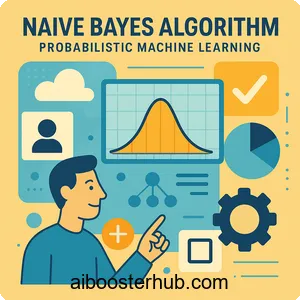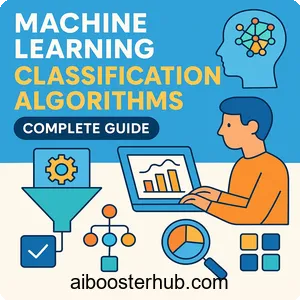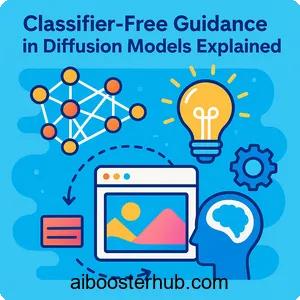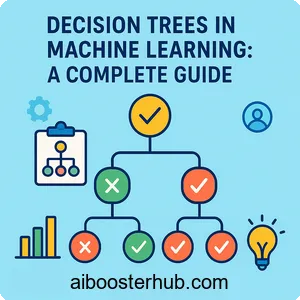Naive Bayes Algorithm: Probabilistic Machine Learning
In the vast landscape of machine learning algorithms, few are as elegant and effective as the naive bayes classifier. Despite its simplicity and the “naive” assumption at its core, this probabilistic approach has proven itself time and again in real-world applications ranging from spam detection to medical diagnosis. The naive bayes algorithm represents a perfect blend of mathematical rigor and practical utility, making it an essential tool in any data scientist’s arsenal.

Understanding the naive bayes classifier begins with grasping what makes it “naive”—the assumption of feature independence. While this assumption rarely holds true in real-world data, the algorithm’s robustness and efficiency have made it a cornerstone of classification tasks. The naive meaning here refers to the simplifying assumption that all features contribute independently to the probability of an outcome, which, paradoxically, often leads to surprisingly accurate predictions.
Content
Toggle1. Understanding Bayes theorem and probabilistic foundations
At the heart of the naive bayes algorithm lies bayes theorem, a fundamental principle in probability theory that describes how to update our beliefs based on new evidence. The theorem provides a mathematical framework for calculating conditional probabilities, which forms the backbone of bayesian model approaches.
Bayes theorem is expressed mathematically as:
$$ P(A|B) = \frac{P(B|A) \cdot P(A)}{P(B)} $$
Where:
- \(P(A|B)\) is the posterior probability: the probability of hypothesis A given evidence B
- \(P(B|A)\) is the likelihood: the probability of observing evidence B given that A is true
- \(P(A)\) is the prior probability: our initial belief about A before seeing the evidence
- \(P(B)\) is the marginal probability: the total probability of observing evidence B
In the context of classification, we’re trying to determine the probability that a data point belongs to a particular class given its features. Let’s say we have a class \(C\) and features \(x_1, x_2, …, x_n\). Bayes theorem tells us:
$$ P(C|x_1, x_2, …, x_n) = \frac{P(x_1, x_2, …, x_n|C) \cdot P(C)}{P(x_1, x_2, …, x_n)} $$
The challenge with this formulation is that calculating \(P(x_1, x_2, …, x_n|C)\) directly becomes computationally prohibitive as the number of features increases. This is where the “naive” assumption comes into play.
The naive independence assumption
The naive bayes classifier makes a bold simplification: it assumes that all features are conditionally independent given the class label. Mathematically, this means:
$$ P(x_1, x_2, …, x_n|C) = P(x_1|C) \cdot P(x_2|C) \cdot … \cdot P(x_n|C) $$
This transforms our classification problem into something much more tractable:
$$ P(C|x_1, x_2, …, x_n) = \frac{P(C) \cdot \prod_{i=1}^{n} P(x_i|C)}{P(x_1, x_2, …, x_n)} $$
Since the denominator is constant for all classes when comparing them, we can focus on maximizing the numerator. The classification rule becomes:
$$ \hat{C} = \arg\max_{C} P(C) \cdot \prod_{i=1}^{n} P(x_i|C) $$
Why it works despite being “naive”
The independence assumption is rarely true in practice. Consider spam detection: the presence of the word “free” and “money” in an email are clearly not independent. However, the naive bayes classifier often performs remarkably well because:
- It only needs the correct ranking: For classification, we don’t need exact probabilities, just the correct ordering of class probabilities
- Errors can cancel out: Dependencies that increase one class probability might similarly affect others
- It’s robust with limited data: The independence assumption means we need to estimate fewer parameters
2. Types of naive bayes classifiers
The naive bayes algorithm comes in several variants, each suited to different types of data and distributions. The choice of variant depends primarily on the nature of your features.
Gaussian naive bayes
The gaussian naive bayes (or gaussiannb) is used when dealing with continuous features that follow a normal distribution. This is perhaps the most commonly used variant in practice, especially for real-valued features.
For continuous features, the likelihood \(P(x_i|C)\) is calculated using the Gaussian probability density function:
$$ P(x_i|C) = \frac{1}{\sqrt{2\pi\sigma_C^2}} \exp\left(-\frac{(x_i – \mu_C)^2}{2\sigma_C^2}\right) $$
Where \(\mu_C\) and \(\sigma_C^2\) are the mean and variance of feature \(x_i\) for class C, estimated from the training data.
Here’s a practical example using Python’s scikit-learn:
from sklearn.naive_bayes import GaussianNB
from sklearn.datasets import load_iris
from sklearn.model_selection import train_test_split
from sklearn.metrics import accuracy_score, classification_report
import numpy as np
# Load the iris dataset
iris = load_iris()
X, y = iris.data, iris.target
# Split the data
X_train, X_test, y_train, y_test = train_test_split(
X, y, test_size=0.3, random_state=42
)
# Create and train the Gaussian Naive Bayes classifier
gnb = GaussianNB()
gnb.fit(X_train, y_train)
# Make predictions
y_pred = gnb.predict(X_test)
# Evaluate the model
accuracy = accuracy_score(y_test, y_pred)
print(f"Accuracy: {accuracy:.3f}")
print("\nClassification Report:")
print(classification_report(y_test, y_pred, target_names=iris.target_names))
# Predict probabilities for a new sample
new_sample = np.array([[5.1, 3.5, 1.4, 0.2]])
probabilities = gnb.predict_proba(new_sample)
print(f"\nPrediction probabilities: {probabilities[0]}")
print(f"Predicted class: {iris.target_names[gnb.predict(new_sample)[0]]}")
Multinomial naive bayes
The multinomial naive bayes is designed for discrete count data, making it particularly popular for text classification tasks where features represent word counts or term frequencies.
The likelihood for multinomial naive bayes is:
$$ P(x_i|C) = \frac{N_{x_i,C} + \alpha}{N_C + \alpha n} $$
Where:
- \(N_{x_i,C}\) is the count of feature \(x_i\) in class C
- \(N_C\) is the total count of all features in class C
- \(\alpha\) is a smoothing parameter (typically 1 for Laplace smoothing)
- \(n\) is the number of features
Example for text classification:
from sklearn.naive_bayes import MultinomialNB
from sklearn.feature_extraction.text import CountVectorizer
from sklearn.model_selection import train_test_split
from sklearn.metrics import accuracy_score, confusion_matrix
# Sample text data for spam classification
texts = [
"Free money now", "Hi Bob, how about lunch tomorrow?",
"Win prizes click here", "Meeting at 3pm in conference room",
"Claim your prize", "Can you send me the report?",
"Get rich quick", "Thanks for your help yesterday",
"Congratulations you won", "Let's schedule a call next week"
]
labels = [1, 0, 1, 0, 1, 0, 1, 0, 1, 0] # 1 = spam, 0 = not spam
# Convert text to numerical features
vectorizer = CountVectorizer()
X = vectorizer.fit_transform(texts)
# Split the data
X_train, X_test, y_train, y_test = train_test_split(
X, labels, test_size=0.3, random_state=42
)
# Train multinomial naive bayes
mnb = MultinomialNB(alpha=1.0)
mnb.fit(X_train, y_train)
# Predict
y_pred = mnb.predict(X_test)
# Test with new messages
new_messages = ["Free gift for you", "Meeting rescheduled to Friday"]
X_new = vectorizer.transform(new_messages)
predictions = mnb.predict(X_new)
for msg, pred in zip(new_messages, predictions):
print(f"Message: '{msg}' -> {'Spam' if pred == 1 else 'Not Spam'}")
Bernoulli naive bayes
Bernoulli naive bayes is designed for binary/boolean features. It’s useful when features represent the presence or absence of characteristics rather than their frequency.
The likelihood is calculated as:
$$ P(x_i|C) = P(i|C) \cdot x_i + (1 – P(i|C)) \cdot (1 – x_i) $$
This variant explicitly models both the presence and absence of features, making it suitable for document classification where we care about which words appear and which don’t.
from sklearn.naive_bayes import BernoulliNB
from sklearn.feature_extraction.text import CountVectorizer
# Using binary features (presence/absence of words)
texts = [
"python machine learning",
"java enterprise development",
"python data science",
"java spring framework"
]
labels = [0, 1, 0, 1] # 0 = Python, 1 = Java
# Create binary features
vectorizer = CountVectorizer(binary=True)
X = vectorizer.fit_transform(texts)
# Train Bernoulli Naive Bayes
bnb = BernoulliNB()
bnb.fit(X, labels)
# Predict
test_texts = ["machine learning algorithms", "spring boot application"]
X_test = vectorizer.transform(test_texts)
predictions = bnb.predict(X_test)
for text, pred in zip(test_texts, predictions):
print(f"Text: '{text}' -> {'Python' if pred == 0 else 'Java'}")
3. Training the naive bayes classifier
Training a naive bayes classifier involves estimating the prior probabilities and the likelihood parameters from the training data. This process is remarkably efficient compared to many other machine learning algorithms.
Estimating prior probabilities
The prior probability \(P(C)\) for each class is simply the proportion of training samples belonging to that class:
$$ P(C) = \frac{\text{number of samples in class } C}{\text{total number of samples}} $$
Estimating likelihood parameters
The method for estimating likelihoods depends on the variant:
For gaussian naive bayes, we calculate the mean and variance for each feature in each class:
$$ \mu_{i,C} = \frac{1}{n_C} \sum_{j \in C} x_{i,j} $$
$$ \sigma_{i,C}^2 = \frac{1}{n_C} \sum_{j \in C} (x_{i,j} – \mu_{i,C})^2 $$
For multinomial naive bayes, we count feature occurrences and apply smoothing:
$$ \theta_{i,C} = \frac{N_{i,C} + \alpha}{N_C + \alpha n} $$
Handling numerical underflow
When multiplying many small probabilities, we risk numerical underflow. The solution is to work in log-space:
$$ \log P(C|x) \propto \log P(C) + \sum_{i=1}^{n} \log P(x_i|C) $$
Here’s a complete implementation from scratch:
import numpy as np
from scipy.stats import norm
class GaussianNaiveBayesFromScratch:
def __init__(self):
self.classes = None
self.priors = {}
self.means = {}
self.variances = {}
def fit(self, X, y):
"""Train the Gaussian Naive Bayes classifier"""
self.classes = np.unique(y)
n_samples = X.shape[0]
for c in self.classes:
# Get samples belonging to class c
X_c = X[y == c]
# Calculate prior probability
self.priors[c] = X_c.shape[0] / n_samples
# Calculate mean and variance for each feature
self.means[c] = np.mean(X_c, axis=0)
self.variances[c] = np.var(X_c, axis=0) + 1e-9 # Add small value to avoid division by zero
def _calculate_likelihood(self, x, mean, variance):
"""Calculate Gaussian likelihood"""
return norm.pdf(x, loc=mean, scale=np.sqrt(variance))
def _calculate_class_probability(self, x, c):
"""Calculate log probability for a class"""
# Start with log prior
log_prob = np.log(self.priors[c])
# Add log likelihoods for each feature
for i in range(len(x)):
likelihood = self._calculate_likelihood(
x[i], self.means[c][i], self.variances[c][i]
)
log_prob += np.log(likelihood + 1e-9) # Avoid log(0)
return log_prob
def predict(self, X):
"""Predict class labels"""
predictions = []
for x in X:
# Calculate probability for each class
class_probs = {}
for c in self.classes:
class_probs[c] = self._calculate_class_probability(x, c)
# Choose class with highest probability
predictions.append(max(class_probs, key=class_probs.get))
return np.array(predictions)
def predict_proba(self, X):
"""Predict class probabilities"""
probabilities = []
for x in X:
# Calculate log probabilities
log_probs = np.array([
self._calculate_class_probability(x, c)
for c in self.classes
])
# Convert to probabilities using softmax
# Subtract max for numerical stability
log_probs = log_probs - np.max(log_probs)
probs = np.exp(log_probs)
probs = probs / np.sum(probs)
probabilities.append(probs)
return np.array(probabilities)
# Test the implementation
from sklearn.datasets import load_iris
from sklearn.model_selection import train_test_split
from sklearn.metrics import accuracy_score
# Load data
iris = load_iris()
X_train, X_test, y_train, y_test = train_test_split(
iris.data, iris.target, test_size=0.3, random_state=42
)
# Train custom implementation
custom_gnb = GaussianNaiveBayesFromScratch()
custom_gnb.fit(X_train, y_train)
# Make predictions
y_pred = custom_gnb.predict(X_test)
accuracy = accuracy_score(y_test, y_pred)
print(f"Custom Implementation Accuracy: {accuracy:.3f}")
print(f"\nPrior probabilities: {custom_gnb.priors}")
print(f"\nMeans for class 0: {custom_gnb.means[0]}")
4. Real-world applications and use cases
The naive bayes classifier has found success in numerous practical applications across various domains. Its efficiency and effectiveness make it particularly valuable in scenarios with limited computational resources or large datasets.
Text classification and spam filtering
One of the most successful applications of naive bayes is in email spam filtering. The algorithm examines the presence and frequency of words to determine whether an email is spam or legitimate.
from sklearn.naive_bayes import MultinomialNB
from sklearn.feature_extraction.text import TfidfVectorizer
from sklearn.pipeline import Pipeline
import numpy as np
# Create a spam classifier pipeline
spam_classifier = Pipeline([
('tfidf', TfidfVectorizer(max_features=1000, stop_words='english')),
('classifier', MultinomialNB(alpha=0.1))
])
# Example training data
emails = [
"Congratulations! You've won a million dollars. Click here now!",
"Hi John, can we meet tomorrow to discuss the project?",
"URGENT: Your account will be suspended. Verify your information now!",
"Thanks for the document. I'll review it by end of day.",
"Get rich quick! Limited time offer! Act now!",
"Meeting scheduled for 2pm in room 301",
"Amazing weight loss pills! Lose 50 pounds in 2 weeks!",
"Could you send me the quarterly report when you have a chance?",
]
labels = [1, 0, 1, 0, 1, 0, 1, 0] # 1 = spam, 0 = ham
# Train the classifier
spam_classifier.fit(emails, labels)
# Test on new emails
new_emails = [
"Free vacation! Click here to claim your prize!",
"Let's grab coffee this afternoon?",
"Your package has been delivered",
]
predictions = spam_classifier.predict(new_emails)
probabilities = spam_classifier.predict_proba(new_emails)
for email, pred, prob in zip(new_emails, predictions, probabilities):
print(f"\nEmail: {email[:50]}...")
print(f"Classification: {'SPAM' if pred == 1 else 'HAM'}")
print(f"Confidence: {np.max(prob):.2%}")
Sentiment analysis
Naive bayes excels at determining the sentiment of text, making it valuable for analyzing customer reviews, social media posts, and feedback.
from sklearn.naive_bayes import MultinomialNB
from sklearn.feature_extraction.text import CountVectorizer
from sklearn.model_selection import cross_val_score
# Movie reviews dataset
reviews = [
"This movie was absolutely fantastic! Best film I've seen this year.",
"Terrible waste of time. Poor acting and boring plot.",
"Pretty good movie with some great scenes.",
"Awful. I walked out after 30 minutes.",
"Loved every minute! Highly recommend.",
"Mediocre at best. Expected much more.",
"Brilliant performances and stunning visuals.",
"Disappointing and predictable.",
]
sentiments = [1, 0, 1, 0, 1, 0, 1, 0] # 1 = positive, 0 = negative
# Create and train sentiment analyzer
vectorizer = CountVectorizer(ngram_range=(1, 2)) # Use unigrams and bigrams
X = vectorizer.fit_transform(reviews)
sentiment_classifier = MultinomialNB(alpha=0.5)
sentiment_classifier.fit(X, sentiments)
# Analyze new reviews
new_reviews = [
"Amazing story with incredible acting!",
"Don't waste your money on this.",
"It was okay, nothing special."
]
X_new = vectorizer.transform(new_reviews)
predictions = sentiment_classifier.predict(X_new)
probabilities = sentiment_classifier.predict_proba(X_new)
for review, pred, prob in zip(new_reviews, predictions, probabilities):
sentiment = "Positive" if pred == 1 else "Negative"
confidence = np.max(prob)
print(f"\nReview: {review}")
print(f"Sentiment: {sentiment} (Confidence: {confidence:.2%})")
Medical diagnosis
In healthcare, naive bayes helps predict diseases based on symptoms and patient characteristics. Its ability to handle probabilistic reasoning makes it well-suited for medical decision support systems.
import pandas as pd
from sklearn.naive_bayes import GaussianNB
from sklearn.preprocessing import LabelEncoder
# Medical diagnosis example
# Features: Age, Blood Pressure, Cholesterol, Heart Rate
patient_data = {
'Age': [45, 55, 38, 62, 50, 41, 58, 47, 53, 39],
'BloodPressure': [120, 140, 110, 150, 135, 125, 145, 130, 142, 115],
'Cholesterol': [200, 240, 180, 260, 220, 190, 250, 210, 235, 185],
'HeartRate': [70, 85, 65, 90, 80, 72, 88, 75, 86, 68],
'Disease': ['No', 'Yes', 'No', 'Yes', 'Yes', 'No', 'Yes', 'No', 'Yes', 'No']
}
df = pd.DataFrame(patient_data)
# Prepare data
X = df[['Age', 'BloodPressure', 'Cholesterol', 'HeartRate']].values
le = LabelEncoder()
y = le.fit_transform(df['Disease'])
# Train diagnostic model
diagnostic_model = GaussianNB()
diagnostic_model.fit(X, y)
# Diagnose new patients
new_patients = [
[52, 145, 245, 87], # High risk patient
[35, 115, 170, 66], # Low risk patient
]
predictions = diagnostic_model.predict(new_patients)
probabilities = diagnostic_model.predict_proba(new_patients)
for i, (patient, pred, prob) in enumerate(zip(new_patients, predictions, probabilities)):
diagnosis = le.inverse_transform([pred])[0]
print(f"\nPatient {i+1}:")
print(f" Age: {patient[0]}, BP: {patient[1]}, Cholesterol: {patient[2]}, HR: {patient[3]}")
print(f" Diagnosis: {diagnosis}")
print(f" Risk probability: {prob[1]:.2%}")
Document categorization
News articles, academic papers, and documents can be automatically categorized using naive bayes, making content management and recommendation systems more efficient.
5. Advantages and limitations
Understanding both the strengths and weaknesses of the naive bayes classifier helps in choosing when to apply it and how to optimize its performance.
Key advantages
Computational efficiency: The naive bayes algorithm is extremely fast for both training and prediction. Training complexity is \(O(n \cdot d)\) where \(n\) is the number of samples and \(d\) is the number of features. This makes it suitable for large-scale applications and real-time systems.
Handles high-dimensional data: The independence assumption actually becomes advantageous in high-dimensional spaces. While other algorithms may suffer from the curse of dimensionality, naive bayes remains effective even with thousands of features, making it popular for text classification.
Works well with small training sets: Unlike deep learning models that require massive amounts of data, naive bayes can produce reasonable results with relatively small training sets because it needs to estimate fewer parameters.
Probabilistic predictions: The algorithm naturally provides probability estimates, not just class labels. This is valuable for applications requiring confidence scores or decision-making under uncertainty.
Robust to irrelevant features: The classifier can handle irrelevant features reasonably well. Features that don’t contribute to classification simply have similar probabilities across all classes.
Limitations and challenges
The independence assumption: The most significant limitation is the assumption that features are conditionally independent. In reality, features often have complex dependencies. For example, in text classification, words like “New” and “York” are clearly dependent.
Zero probability problem: If a feature value doesn’t appear in the training set for a particular class, it will be assigned zero probability, making the entire calculation zero. This is typically addressed through smoothing techniques:
from sklearn.naive_bayes import MultinomialNB
# Without smoothing (alpha=0) can cause problems
# With Laplace smoothing (alpha=1)
mnb_smoothed = MultinomialNB(alpha=1.0)
# With different smoothing values
mnb_custom = MultinomialNB(alpha=0.5) # Less aggressive smoothing
Poor estimation of probabilities: While naive bayes often predicts the correct class, the actual probability values can be poorly calibrated. The probabilities tend to be too extreme (too close to 0 or 1).
Continuous features require distribution assumptions: Gaussian naive bayes assumes features follow a normal distribution, which may not always be true. For non-Gaussian continuous features, transformations or different variants might be needed.
Sensitive to feature scale and format: The performance can vary significantly based on how features are represented and preprocessed.
When to use naive bayes
The naive bayes classifier is ideal when:
- You need a simple, fast baseline model
- Working with text classification or document categorization
- Dealing with high-dimensional sparse data
- You have limited training data
- Real-time prediction is required
- Interpretability is important
Consider alternatives when:
- Feature dependencies are critical to the problem
- You need well-calibrated probability estimates
- Complex non-linear relationships exist in the data
- You have abundant training data and computational resources
6. Optimization and best practices
To get the best performance from your naive bayes classifier, consider these optimization techniques and best practices.
Feature engineering
The quality of features directly impacts classifier performance. For text data:
from sklearn.feature_extraction.text import TfidfVectorizer
from sklearn.naive_bayes import MultinomialNB
from sklearn.pipeline import Pipeline
# Optimized text processing pipeline
text_classifier = Pipeline([
('tfidf', TfidfVectorizer(
max_features=5000, # Limit vocabulary size
min_df=2, # Ignore rare terms
max_df=0.8, # Ignore very common terms
ngram_range=(1, 2), # Use unigrams and bigrams
sublinear_tf=True, # Use sublinear scaling for term frequency
stop_words='english' # Remove common words
)),
('classifier', MultinomialNB(alpha=0.1))
])
Smoothing parameter tuning
The smoothing parameter (alpha) prevents zero probabilities and can significantly affect performance:
from sklearn.model_selection import GridSearchCV
from sklearn.naive_bayes import MultinomialNB
# Grid search for optimal alpha
param_grid = {
'alpha': [0.001, 0.01, 0.1, 0.5, 1.0, 2.0, 5.0]
}
grid_search = GridSearchCV(
MultinomialNB(),
param_grid,
cv=5,
scoring='accuracy',
n_jobs=-1
)
grid_search.fit(X_train, y_train)
print(f"Best alpha: {grid_search.best_params_['alpha']}")
print(f"Best cross-validation score: {grid_search.best_score_:.3f}")
Handling imbalanced classes
When classes are imbalanced, consider adjusting class priors:
from sklearn.naive_bayes import GaussianNB
from collections import Counter
# Check class distribution
class_counts = Counter(y_train)
print(f"Class distribution: {class_counts}")
# Option 1: Fit with class_prior parameter
prior = [class_counts[0]/len(y_train), class_counts[1]/len(y_train)]
gnb = GaussianNB(priors=prior)
# Option 2: Use resampling techniques
from imblearn.over_sampling import SMOTE
smote = SMOTE(random_state=42)
X_resampled, y_resampled = smote.fit_resample(X_train, y_train)
Feature selection
Removing irrelevant features can improve performance:
from sklearn.feature_selection import SelectKBest, chi2
from sklearn.pipeline import Pipeline
# Feature selection pipeline
classifier_with_selection = Pipeline([
('feature_selection', SelectKBest(chi2, k=100)),
('classification', MultinomialNB(alpha=0.1))
])
classifier_with_selection.fit(X_train, y_train)
Cross-validation and evaluation
Always validate your model properly:
from sklearn.model_selection import cross_val_score, StratifiedKFold
from sklearn.metrics import classification_report, confusion_matrix
import seaborn as sns
import matplotlib.pyplot as plt
# Stratified K-Fold cross-validation
skf = StratifiedKFold(n_splits=5, shuffle=True, random_state=42)
cv_scores = cross_val_score(
MultinomialNB(alpha=0.1),
X_train,
y_train,
cv=skf,
scoring='f1_macro'
)
print(f"Cross-validation scores: {cv_scores}")
print(f"Mean F1 score: {cv_scores.mean():.3f} (+/- {cv_scores.std():.3f})")
# Detailed evaluation on test set
y_pred = classifier.predict(X_test)
print("\nClassification Report:")
print(classification_report(y_test, y_pred))
# Confusion matrix visualization
cm = confusion_matrix(y_test, y_pred)
plt.figure(figsize=(8, 6))
sns.heatmap(cm, annot=True, fmt='d', cmap='Blues')
plt.title('Confusion Matrix')
plt.ylabel('True Label')
plt.xlabel('Predicted Label')
plt.show()
Combining with other techniques
Naive bayes can be combined with other methods for improved performance:
from sklearn.ensemble import VotingClassifier
from sklearn.linear_model import LogisticRegression
from sklearn.tree import DecisionTreeClassifier
# Ensemble of classifiers
ensemble = VotingClassifier(
estimators=[
('nb', MultinomialNB(alpha=0.1)),
('lr', LogisticRegression(max_iter=1000)),
('dt', DecisionTreeClassifier(max_depth=5))
],
voting='soft' # Use probability estimates
)
ensemble.fit(X_train, y_train)
ensemble_score = ensemble.score(X_test, y_test)
print(f"Ensemble accuracy: {ensemble_score:.3f}")
7. Conclusion
The naive bayes algorithm stands as a testament to the principle that simplicity and effectiveness can coexist in machine learning. Despite its “naive” assumption of feature independence, this probabilistic classifier has proven its worth across countless applications, from spam detection to medical diagnosis. Its computational efficiency, ability to handle high-dimensional data, and effectiveness with limited training samples make it an invaluable tool in any data scientist’s toolkit.
Understanding the naive bayes classifier—from its mathematical foundations in bayes theorem to its practical variants like gaussian naive bayes, multinomial naive bayes, and Bernoulli naive bayes—enables practitioners to leverage its strengths while being mindful of its limitations. While more sophisticated algorithms may outperform it in some scenarios, naive bayes remains a strong baseline model and continues to excel in text classification, real-time applications, and situations requiring interpretable probabilistic predictions. As machine learning continues to evolve, the naive bayes algorithm reminds us that sometimes the most elegant solutions are also the most enduring.









